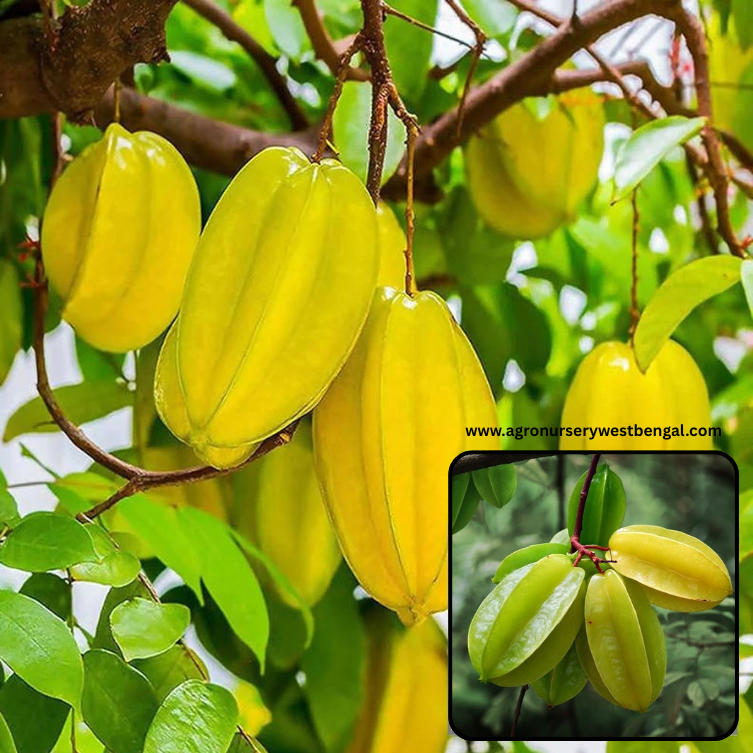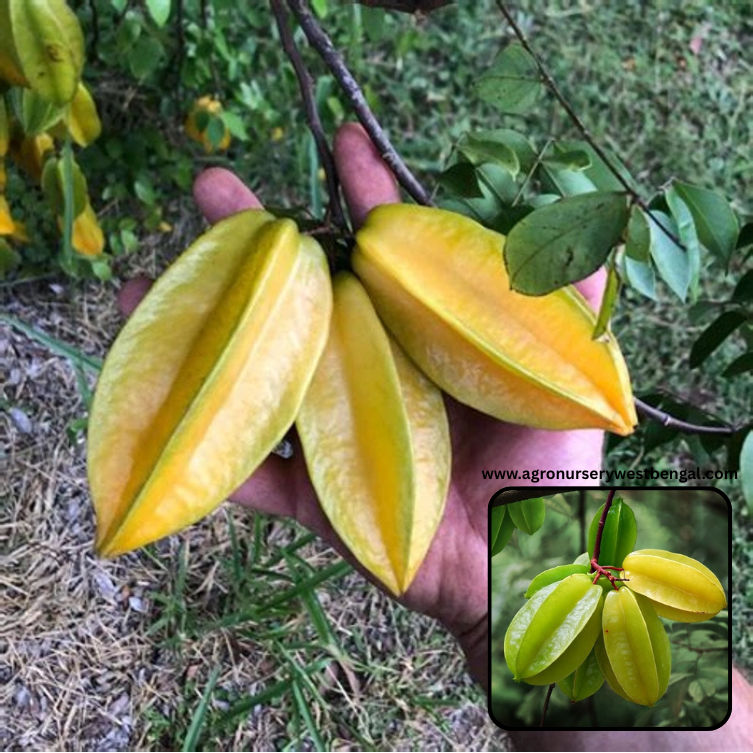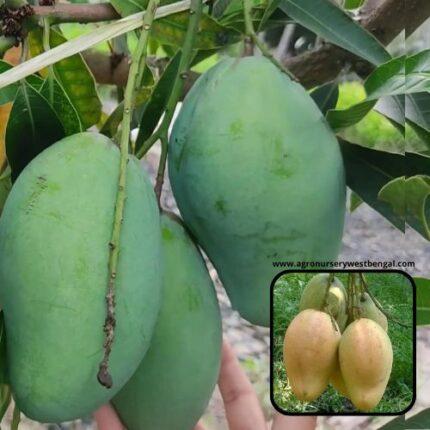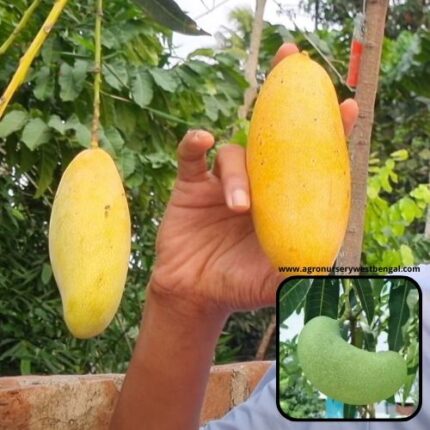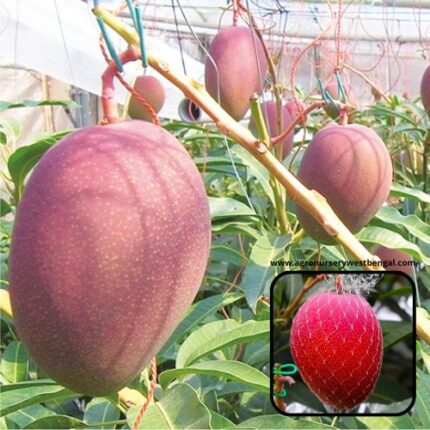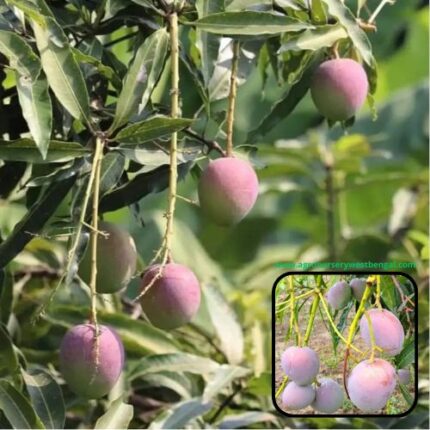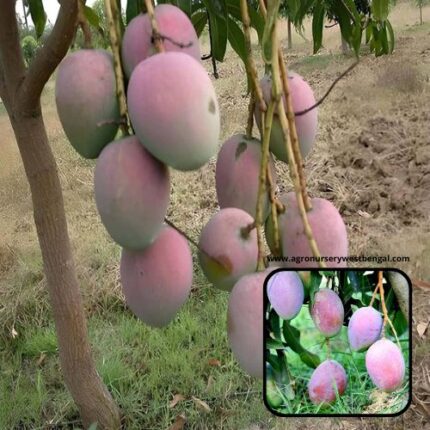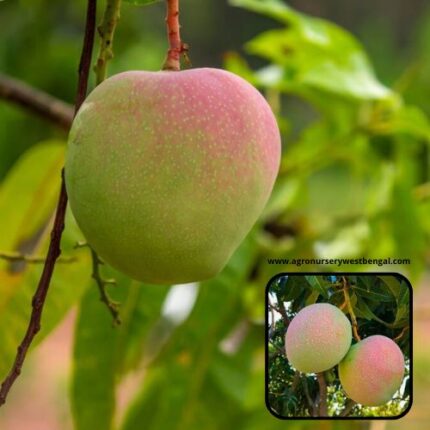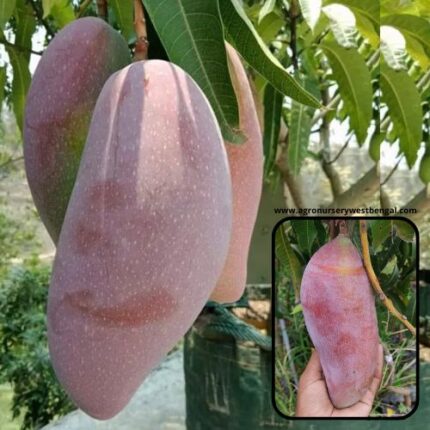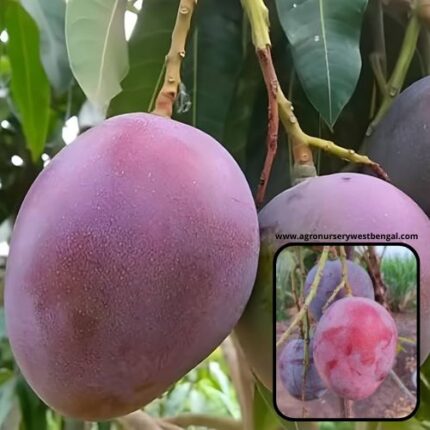


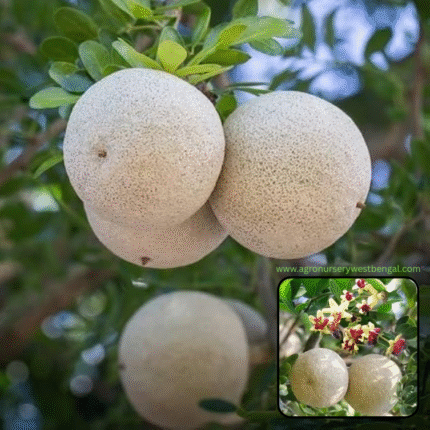
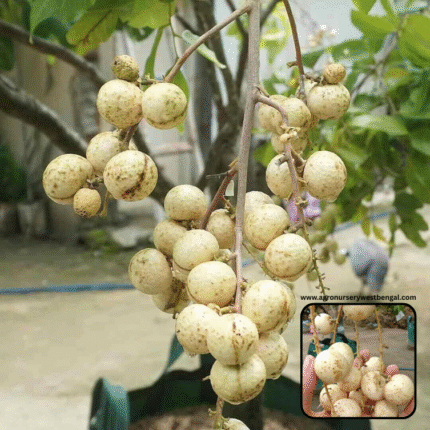
Sweet star fruits plants
₹899 Original price was: ₹899.₹499Current price is: ₹499.
“Sweet star fruits,” also known as carambola, are a popular tropical fruit recognized for their unique star-like shape when sliced crosswise. While all star fruits have the characteristic ridges, “sweet” varieties are specifically cultivated to have a higher sugar content and lower oxalic acid levels, resulting in a more palatable, less tart flavor compared to their “sour” counterparts.
Here’s a detailed description of sweet star fruits:
1. Appearance:
- Shape: The most distinguishing feature is its elongated, oval shape with 5 (sometimes 4 or 6) prominent, sharp, longitudinal ridges or “wings” running down its sides. When cut horizontally, these ridges create a perfect star shape.
- Skin: The skin is thin, smooth, and waxy, ranging in color from light green when unripe to a vibrant golden yellow or orange-yellow when fully ripe. The edges of the ridges may turn slightly brown when perfectly ripe.
- Flesh: The flesh is translucent, crisp, and very juicy. It’s typically a pale yellow to yellow color.
- Seeds: Sweet star fruits usually contain few to no seeds. Any seeds present are small, flat, and light brown, often enclosed in a gelatinous aril.
2. Taste and Flavor Profile:
- Sweetness: As the name suggests, sweet star fruits are characterized by their sweetness. However, even the “sweet” varieties often retain a subtle, pleasant tartness or acidity, which balances the sweetness and adds to their refreshing quality.
- Flavor Notes: The flavor is often described as a unique blend of other fruits, with hints of apple, pear, grape, and citrus (especially lemon or lime). It’s generally mild and refreshing.
- Texture: They are known for being crunchy and juicy, providing a satisfying bite. They are largely fiber-free.
3. Aroma:
- A ripe sweet star fruit emits a mild, pleasant, floral-fruity aroma. Overripe fruit can sometimes develop a slightly fermented smell.
4. Ripeness Indicators:
- Color: The fruit should be primarily golden yellow, with the ridges also turning yellow. Green hints indicate it’s not fully ripe.
- Firmness: It should feel firm but yield slightly to gentle pressure.
- Smell: A strong, pleasant, fruity aroma indicates peak ripeness and flavor.
- Brown Ridges: Some sweet varieties, when perfectly ripe, will show slight browning on the edges of the ridges, which is a sign of optimal sweetness and does not indicate spoilage.
5. Popular Sweet Varieties:
- Some well-known sweet carambola cultivars include:
- ‘Arkin’: Known for its consistent quality, very sweet flavor, good shelf life, and attractive bright yellow-orange color.
- ‘Fwang Tung’: Often described as having a very good, sweet, and somewhat lemon-like flavor.
- ‘Sri Kembangan’ (or ‘Kembangan’): Produces large, elongated fruits with a rich, sweet flavor and few seeds.
- ‘Kary’: A Hawaiian cultivar known for its very good quality and flavor, with a deep yellow to orange-yellow color when ripe.
- ‘Hoku’: Another Hawaiian selection, offering a sweet, rich flavor with few seeds and a bright yellow color.
6. Culinary Uses:
- Fresh Eating: Sweet star fruits are primarily enjoyed fresh, either simply sliced and eaten as a snack or added to fruit salads. The entire fruit, including the skin, is edible.
- Garnish: Their distinctive star shape makes them an excellent and attractive garnish for drinks, desserts, and savory dishes.
- Juices and Smoothies: They can be juiced or blended into refreshing beverages.
- Desserts: Used in tarts, jellies, jams, and other sweet preparations.
7. Nutritional Value:
- Sweet star fruits are low in calories but rich in Vitamin C, providing a significant portion of the daily recommended intake.
- They also contain dietary fiber, antioxidants (like quercetin, gallic acid, and epicatechin), and smaller amounts of B vitamins, copper, and potassium.
Important Note on Oxalic Acid: While sweet varieties have lower levels, all star fruits contain oxalic acid and a neurotoxin called caramboxin. For individuals with kidney disease or those on certain medications, consuming star fruit can be dangerous and is strongly discouraged, as the toxins can accumulate in the body and lead to serious neurological and kidney issues. For most healthy individuals, consumption in moderation is generally safe

